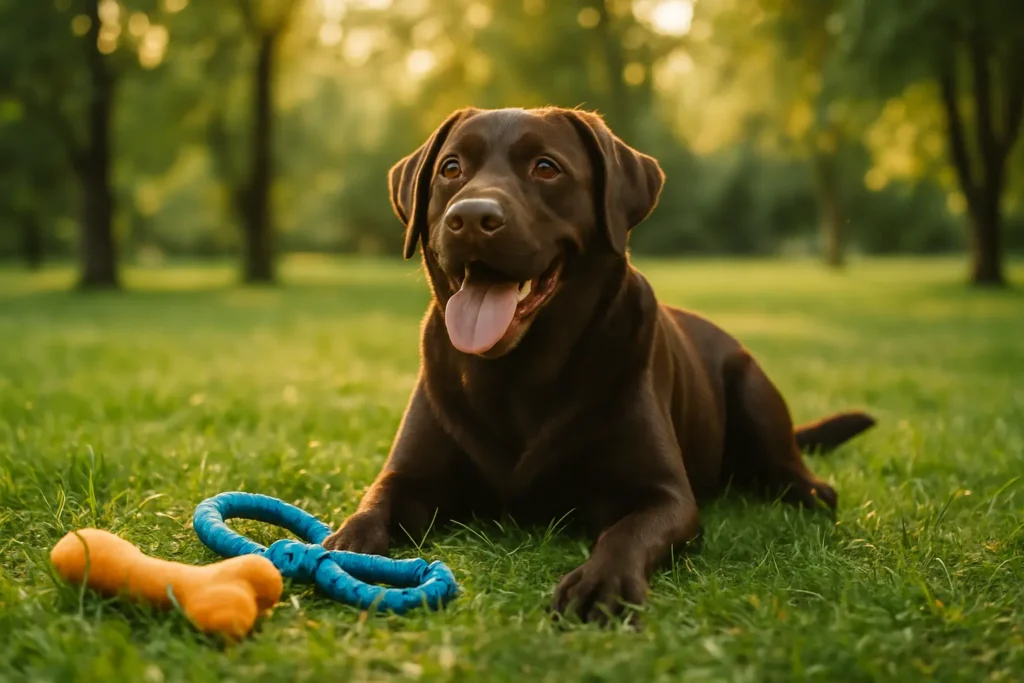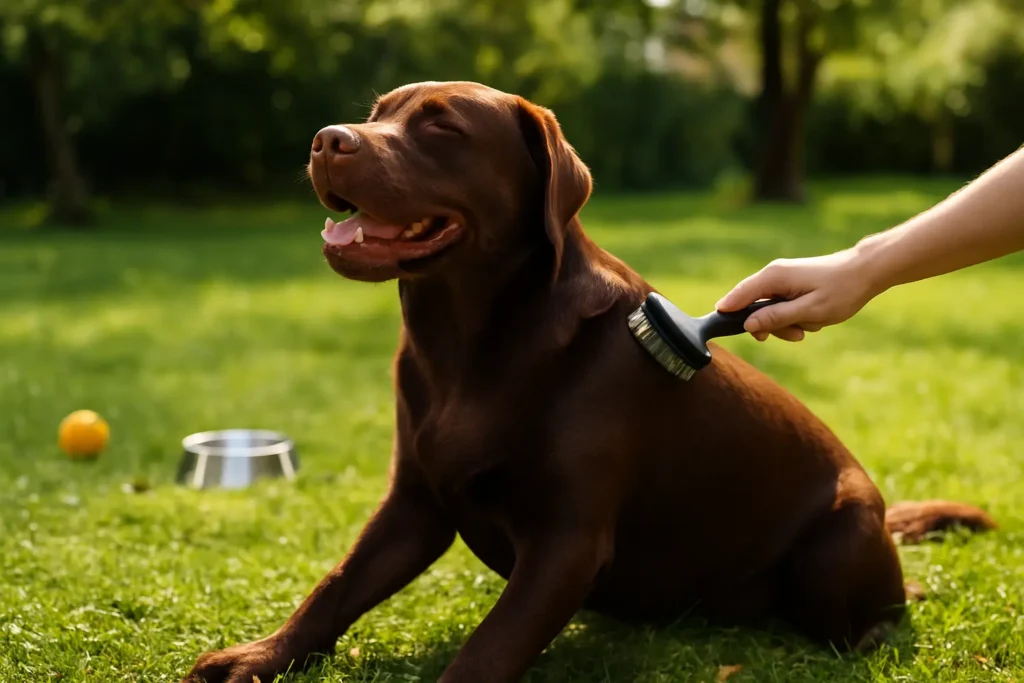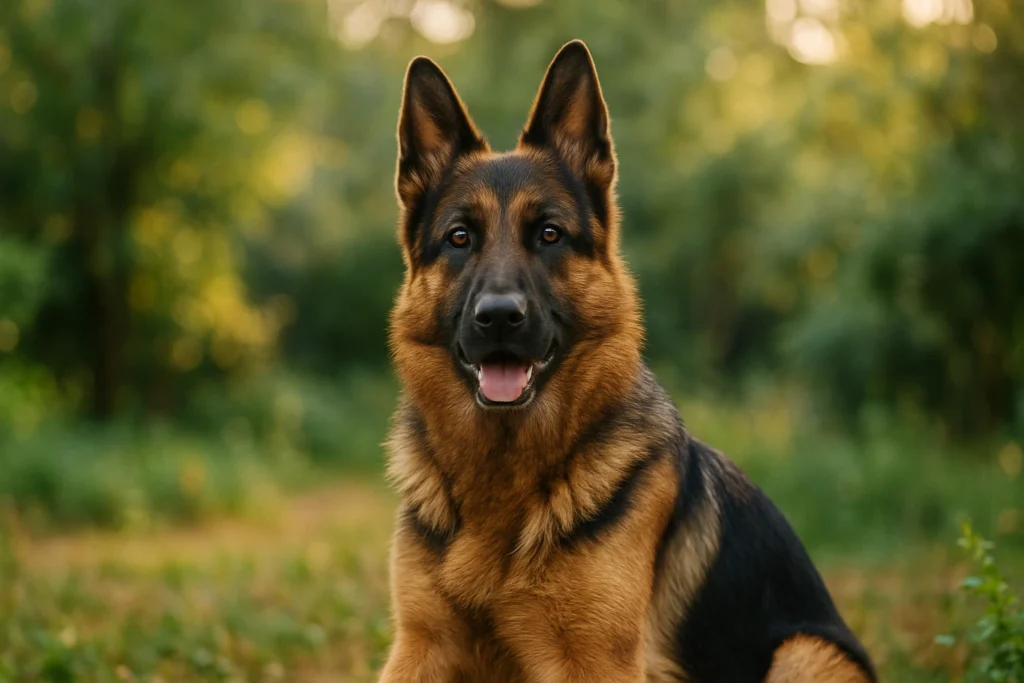The Honest Guide Every Dog Parent Should Read
Planning Your Next Adventure With Your Furry Friend? I’ve Been There…
The first time I met Max, my chocolate Lab, he tackled me with excitement and slobbered all over my jeans. I didn’t even mind—I was already sold. Big brown eyes, a tail that never stopped wagging, and a heart as big as the moon. But let me tell you… that first week? Oh boy. I learned the hard way that Labs are a whole personality, not just a pet.
Whether you’re thinking about adopting a Labrador Retriever or you already have one at your feet as you read this, you’re in the right place. This post isn’t a dry list of breed facts—it’s the real-deal experience from someone who’s lived through chewed-up remotes, muddy paw prints on the couch, and the kind of love only a Lab can give.
Let’s dive into the heartfelt, hilarious, and sometimes messy world of Lab ownership—pros, cons, and all the slobber in between.
PRO: They’re Incredibly Friendly and Outgoing
If Labs had a motto, it’d be “everyone’s a friend.” I’ve never met a dog breed so genuinely excited to meet every human they see. Whether it’s a toddler at the park or a grumpy neighbor taking out the trash, Labs approach with full tail-wag confidence.
Why This Is a Game-Changer:
Labs make incredible companions for families, singles, and seniors alike. They’re not just friendly—they’re social butterflies who crave connection.
My Experience:
When I first brought Max home, he instantly loved the mail carrier. Not “oh look, a person” loved—but “I’m gonna sit by the door every day at 10:00 AM just to say hi” kind of love. One day, he even tried to follow her down the sidewalk like she was his new best friend.
Quick Tip:
Use their social nature to your advantage. Frequent walks, dog parks, or puppy meetups will do wonders for their mental stimulation—and give you a few stories to laugh about too.
PRO: Smart as a Whip and Ready to Learn
Labrador Retrievers are one of the most trainable dog breeds out there. They love to learn, and even more? They love to please you. That combo makes training fun instead of frustrating.
Why That’s Important:
A smart dog means quicker potty training, fewer behavioral issues, and easier adjustment to your lifestyle.
Max’s Moment of Genius:
One rainy afternoon, I taught Max to bring me a towel for his paws. By the third day, he’d race to the towel rack the second we stepped inside. Proud dog. Dry floor. Win-win.
Pro Tip:
Use positive reinforcement. Labs respond so well to praise, treats, and belly rubs. Mix short training sessions with playtime, and you’ll both look forward to it.
PRO: Energy for Days (Your Built-In Workout Buddy)
Do you love hiking, jogging, playing fetch, or even just being outdoors? Perfect—so does your Labrador. Labs are athletic, enthusiastic, and downright built for adventure.
Why It Matters:
They’re the ultimate outdoor companion. Rain or shine, your Lab will be ready before you even grab the leash.
Real-Life Reminder:
I once took Max on a “short hike” that turned into a four-hour trek. He was still pulling on the leash at the end like, “That’s it?” Meanwhile, I was Googling “how to fake a twisted ankle.”
Exercise Tip:
Labs need a minimum of an hour a day. Mix in walking, fetch, swimming (they love water!), or doggy daycare for social play.
PRO: Perfect Family Dogs
Labrador Retrievers are famously gentle and patient with children. Their easygoing nature and big hearts make them an ideal breed for growing families.
Why Parents Love Them:
They’re tolerant, protective without being aggressive, and always down for a cuddle pile on the floor.
From My Family to Yours:
My niece (she’s 3) visits every weekend. Max follows her everywhere, nudging her away from sharp corners or curling up beside her during nap time. It melts my heart.
Tip for Harmony:
Teach kids how to respectfully interact with dogs, and always supervise play until both sides know the ground rules.
PRO: Loyal for Life
Labs bond deeply. They’re not just pets—they’re shadow-like companions who follow you from the kitchen to the bathroom to the backyard (yes, even the bathroom… privacy is not a thing).
Why It Matters:
There’s comfort in their constant companionship. They’ll cheer you on during the highs and nuzzle up during the lows.
Max Moment:
After a rough day, I sat down on the floor to take a breath. Max quietly rested his head on my lap. No barking, no nudging—just “I’m here if you need me” energy. That’s a Lab for you.
CON: Shedding, and Then Some
Let’s talk fur. Labrador Retrievers shed. A lot. If you’re wearing black, you might as well be wearing a sign that says “I own a Lab.” Their double coat is designed for insulation, which means year-round shedding with heavy blowouts during spring and fall.
Why This Matters
If you’re not into daily vacuuming or lint rolling before work, a Lab might test your patience. Allergies? Shedding is something to consider carefully.
From My Home
There was a point when I stopped vacuuming daily and just started naming the hair tumbleweeds that rolled across the hardwood floors. My Roomba works harder than I do.
What Helps
Brush your Lab a few times a week. I use a de-shedding tool during shedding season and keep grooming wipes near the front door for post-walk cleanups. Regular baths (every 6–8 weeks) can also control loose hair.
CON: Energy Overload if You’re Not Ready
Labs need more than just a backyard—they need real engagement. If they don’t get enough physical and mental stimulation, they get bored. And a bored Lab is like a toddler with espresso.
Why You Should Care
Under-exercised Labs can become destructive. We’re talking chewed furniture, dug-up gardens, or sudden zoomies at 2 a.m.
Personal Lesson Learned
I once skipped Max’s afternoon walk to catch up on laundry. Big mistake. He chewed through a corner of the couch and looked proud doing it. That was my wake-up call.
Make It Work
Create a daily schedule. Split exercise into morning and evening sessions. Mix in puzzle toys and chew toys when you’re busy. A tired Lab is a well-behaved Lab.
CON: They Love Food… Too Much
Labs are food-motivated, which makes training easier, but it also makes them prone to overeating. They’ll beg, plead, and put on the saddest eyes you’ve ever seen—don’t fall for it.
Why It Matters
Obesity is one of the biggest health risks in Labradors. It can lead to joint issues, heart problems, and a shorter lifespan.
True Story
Max once figured out how to open the pantry. I walked in to find an empty dog food bag and a very round, very sleepy pup. We switched to a storage bin with a locking lid that day.
Smart Tips
Measure food portions, skip table scraps, and use low-calorie treats like carrots or apple slices. Your vet can help set a target weight range.
CON: Health Concerns to Watch For
Labs are generally healthy, but like all purebred dogs, they have some common health risks—especially as they age. Hip dysplasia, elbow dysplasia, ear infections, and eye conditions are the big ones.
Why It’s Crucial
Knowing what to expect helps you catch problems early and keep your pup healthy longer.
What Happened with Max
At around age 6, Max started slowing down. X-rays showed early signs of hip dysplasia. We caught it early, adjusted his diet, and added joint supplements and swimming to keep him mobile.
How to Stay Ahead
Ask breeders about genetic testing if you’re getting a puppy. Keep up with vet visits, maintain a healthy weight, and add supplements or joint-friendly foods if your vet recommends it.
CON: Puppy Phase = Chaos
Labrador puppies are adorable chaos gremlins. They’re bitey, hyper, and curious about everything from power cords to bathroom trash cans.
Why It’s a Big Deal
That first year requires patience, supervision, and consistent training. If you’re not ready to puppy-proof your home, you’ll learn the hard way.
When Max Was a Pup
He once proudly brought me a chewed-up sneaker, wagging his tail like he found treasure. It was one of my good running shoes. Lesson learned: closed closets, always.
How to Survive It
Crate training is your best friend. Keep chew toys in every room. Enroll in puppy classes early and stick to a schedule.
Final Thoughts From One Lab Parent to Another
Owning a Labrador Retriever is like adding a walking heart to your home. They’re loyal, hilarious, and full of love—but they also come with hair, energy, and a never-ending appetite. If you’re ready for the commitment, the rewards are so worth it.
Some days, Max still tests my patience. He steals socks, barks at squirrels, and sheds like it’s his part-time job. But at the end of every day, he curls up next to me with that contented sigh, and I think, yeah, this is exactly what I needed.
Whether you’re preparing to adopt a Lab or already have one curled up by your feet, I hope this post gave you some insight, some laughs, and maybe even a few “me too!” moments.
Grab Your Free Labrador Owner Checklist
I put together a printable checklist with everything you need to keep your Lab happy, healthy, and well-exercised. From feeding schedules to grooming reminders and mental stimulation ideas, it’s perfect for new Lab parents or those looking to reset routines.
👉 Check out the Labrador Care Checklist
Got a Lab story of your own? I’d love to hear it in the comments. What’s the funniest thing your pup has ever done? Let’s share the love—and the laughs.
Thanks for hanging out with me and Max today. Here’s to muddy paws, happy tails, and hearts full of Labrador love.
— Happy Parenting with a lifelong dog lover and proud Lab parent.




